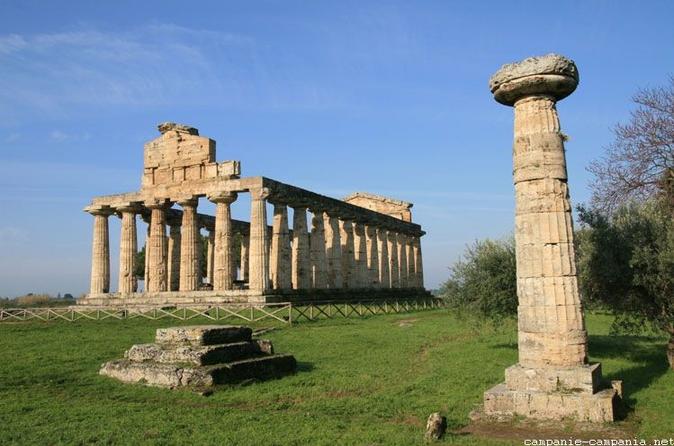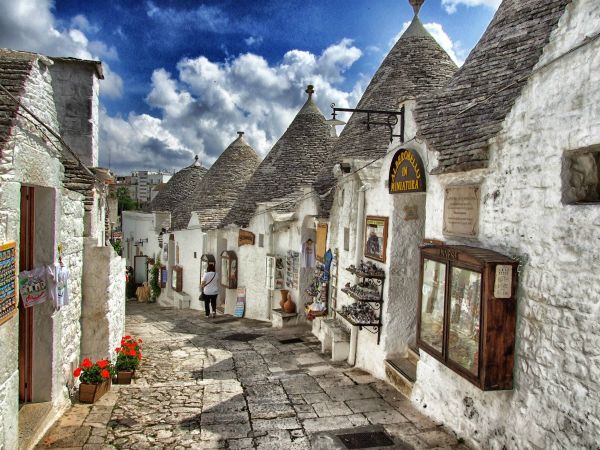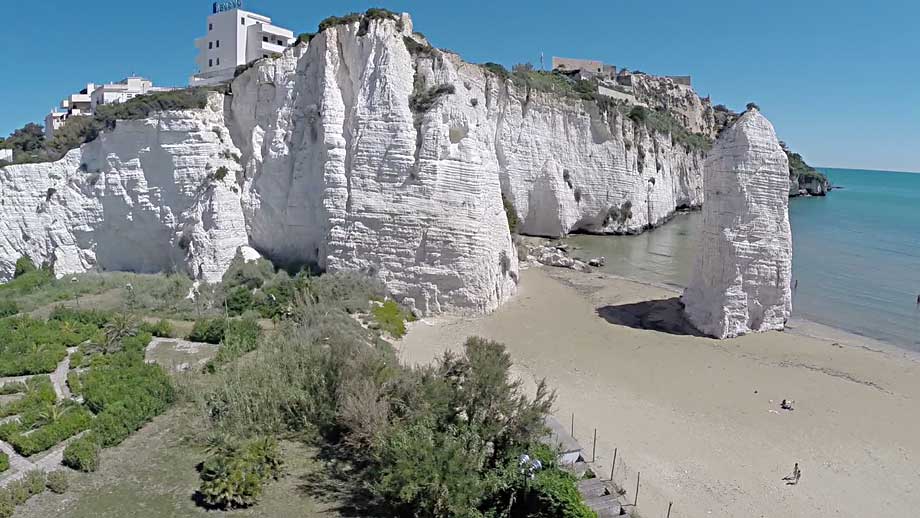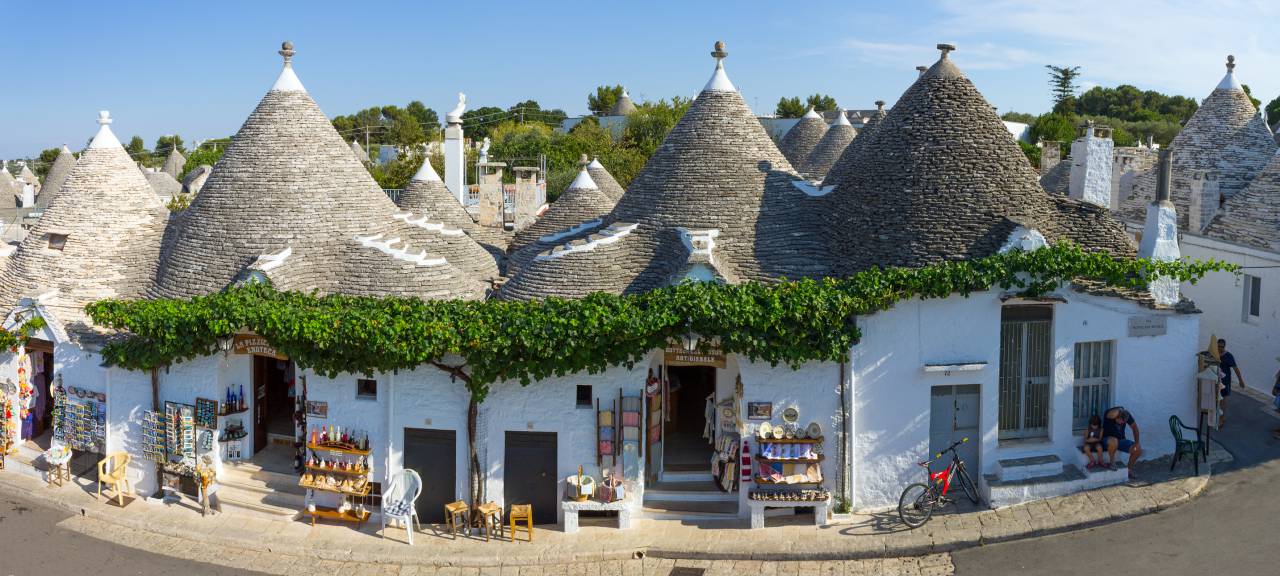Mar 4-7, 2018
CALABRIA PROVINCE
The toe of the boot, it is mostly mountains and with a long history of poverty, mafia and emigration. It is not on many tourist’s lists of places to go. I had already driven the entire west Tyrrhenian coastline on my way to Sicily.
The area only became historically important with the arrival of the Greeks in the 8th century BC who were replaced by the Romans in 202 BC. All the wonderful forests were logged and floods destroyed the navigable rivers. It remained a feudal area wracked by malaria and eventually the Calabria Mafia. Now the youth emigrate for work. The Ionian coast is a long, uninterrupted string of resorts thronged in the summer.
The A3 autostrada is one of Italy’s good coastal drives.
PAESTUM.
On my way to Sicily, I drove to the coast of Calabria.
A Unesco site, the great Greek temples here are the best preserved and greatest outside of Greece. Founded in the 6th century, it was an important trading port until the fall of the Roman Empire, virtually disappeared, was rediscovered in the late 18th century, and then not unearthed until the 1950s. Three wonderful temples dedicated to Ceres, Neptune and the goddess Hera are well preserved. The latter has 9 columns across the front and 18 along the sides. I arrived well before it opened to discover it is not really necessary to pay an admission fee as virtually everything interesting can be seen from outside the fence.


I then went on a drive about. Passing through the pretty beach resort of Agropoli, I turned onto the back roads along the coast, got off track, and had a weird drive along very narrow roads through some remote hills and tiny villages. Finally hitting a highway, I followed S18 along the coast south of Sapa.
Initially, the narrowest most winding road in the world followed the cliffs high above the ocean. With wonderful views, I wondered why I was the only vehicle. Thankfully, after Scalea, a real highway appeared as it would have taken me days to drive that road. Passing through one continuous beach resort for a few hundred kilometres, I relented to take the autostrada to the ferry to Messina, Sicily at Villa San Giovanni where I arrived just before it left at 7 pm. Costing a 65€ return for the 30-minute ride, I still had a long 2-hour drive at night to Palermo along the north coast – most of it seeming through almost continuous tunnels high above the ocean.
After a 4-hour sleep, I drove for about an hour along the extravagant autostrada passing through wonderful tunnels, slept again before light, and planned my route to the heel of the boot.
Cosenza. (pop70,000). It serves as the transport hub for Calabria and the gateway to the nearby mountains of Sila NP. The typical old town has a 12th-century cathedral rebuilt in a baroque style (and one of the Unesco Romanesque churches in most cities of the south. The highest peaks in Sila NP top 2000m one has a ski hill.
BASILICA PROVINCE
Bordering the instep, it has resorts on the water, rugged dolomite mountains in the interior, and in the north rolling hills cultivated with wheat, olives, and grapes. Historically it linked Rome with the eastern Byzantine Empire and was successively invaded, plundered, abandoned, and neglected.
CASTELMEZZO & PIETRAPERTOSA. These two mountaintop villages (985m and 1088m respectively) are ringed by the Lacanian Dolomites. Often swathed in cloud, one wonders why anyone would build in these impossible locations. The road from the east to Castelmezzo was blocked and so only Pietrapertosa was accessible. The town sits amongst the highest pinnacles and its castle is right at the top.
From the east, the road accesses a small part of Pietrapertosa – you walk through a tiny pass to get to the main part of the village sitting vertiginously on the mountainside. I walked up the very steep one-way road to a small church and the castle. Everything was closed and I didn’t see a soul. The only evidence of life was many barking dogs.
The villages are separated by a wide, deep gorge. A zipline – the longest in the world at 1452m and fastest at 120km/hour – connects the two. Riders are suspended belly down in a cradle harness. It was closed on the day I was there and extends from a mountain high above Castlemezzo descending to well below Pietrapertosa.
This would be a great place to hike with trails running all over. One needs their own vehicle to visit them.

PUGLIA PROVINCE.
The heel of the boot, it is rich in Baroque architecture and many Centro Storico have not qualified for Unesco status. Historically, its long coastline made it vulnerable to conquest. Malaria was the greatest scourge forcing many towns to build away from the coast. Puglia is now covered with wheat fields, olive groves, and fruit arbours.
TARANTO (pop 194,000). Taranto sits at the inside of the “heel”. With a swank new city based on massive steelworks and Italy’s second-biggest naval base, the Centro Storico (old town) is small with an abandoned air. It sits on a small narrow island connected by a short bridge. I had a walkabout through the narrow streets. I visited a couple of churches before finding the cathedral.
Duomo. Built in the 11th century, it is dedicated to San Cataldo, an Irish monk who lived and was buried here in the 7th century. The chapel to him is an impressive baroque riot of frescoes and polychrome marble inlay. Remnants of marble fresco cover parts of the floor.

I arrived at the large central square with its small Roman amphitheatre (discovered in 1901 by construction workers and excavated in 1930) in the center, got kicked out of my parking space, and then had a drive about trying to find another.

Duomo. In a big open piazza amid the surrounding enclosed lanes, the 12th-century cathedral has a 68m-bell tower and unusually two facades. It is another spectacular Baroque church with great carved marble inlays, columns and paintings adorning the ceilings.
Teatro Romano. Accompanied by a small museum, it is not worth the 3€ price, but can be seen better from a small lane around the corner.
Chiesa di San Matteo. Another wonderful little church.
Basilica di Santa Croce. The star of the town is renowned for its amazing carved façade replete with gargoyles, asparagus columns, and gremlins (now covered as it is being renovated).

BRINDISI (pop 90,000). On the Adriatic, its only significance is that it was the terminus of the Via Appia. Starting in Rome (where the catacombs are), it was a route taken by legionnaires, pilgrims, crusaders, and traders heading for Greece and the Near East. It still has one of the two columns marking the end of the Via Appia (the other was given to Lecce in 1666 to thank St Oronzo for having relieved Brindisi of the plague (it is in the small Roman theatre museum in several fragments).
VALLE d’ITRIA. Between the Ionian and Adriatic coasts is this limestone plateau and valley (473m). Throughout the area are curious stone-built houses. It is unclear why this form of architecture was developed. One theory is that these dry-stone constructions could be quickly dismantled to avoid payment of taxes. My theory is that it is very rocky and in clearing land for fields, they had a lot of building material.
LOCOROTONDO (pop 14,000). I stopped here on my way to Alberobello as they are close together. The small city has a beautiful central Storico – pedestrianized, paved with smooth, ivory-coloured stone and all the buildings painted white. There are panoramic views of the valley from a small park across the street from the church.
ALBEROBELLO (pop 11.000). Unesco listed, the Zona dei Trulli on the western hill of town is a dense mass of 1500 beehive-shaped houses constructed of dry-stone made from local limestone. The conical roofs are what is unusual, large stone inside and natural dark flat stones laid on top of each other. The rooflines have interesting eaves and gutters and are topped by white features. Many have white symbols painted on them. Inside, many have a wood loft for the extra sleeping room as often large families live in the tiny homes.
The entire neighborhood is mostly knick-knack shops but some are homes. It is the most popular tourist spot in Puglia. Instead of descending all

MONTE. Unesco listed, this castle was built in 1254 by Frederick II, the grandson of Roger II, the king of Sicily (who built many of the Arab-Norman monuments in Palermo and the area). It sits on a high hill in a remote spot with no nearby town or strategic crossroads. It was not built to defend anything with no moat or drawbridge, no arrow slits, and no trapdoors for pouring boiling oil on invaders. One theory is that is a celebration of the relationship with God with its geometric symbolism.
It is a perfect octagon built around a large central courtyard. Eight octagonal towers many with wonderful spiral stairways, sit at each corner. The two towering floors each have eight rooms, some with fireplaces and toilets (possibly Europe’s first flushing loos). Doorways and windows are framed in a conglomerate red stone. Views are panoramic down to the ocean 35 km away. Barletta, Mofetta and Bari are all visible. There is public transportation here but it is a train and then a bus but this is only available from April to October. 7€.

I had a long drive-about to get here at 16:50, but thankfully, it was open until 8pm. From a distance, it looks like a recent construction. The day was unbelievably windy and cold in the late afternoon.
BARI (pop 320,000). As the second-largest city in southern Italy, it is a busy port with connections to Greece, Albania, and Croatia. Most sites are in the old town with 40 churches and 120 shrines.
Castello Svevo. Originally Roman, it was added by many rulers over the years. In Spanish rule, it was a magnificent residence. It is huge and surrounded by a moat.
Basilica di San Nicola. This was one of the first Norman churches to be built in southern Italy in the 12th century. St Nicolas’ relics were stolen from Turkey in 1087 and are now housed here. The simple interior has paintings surrounded by heavy gilding.
Cathedral. The highlight is the mosaics in the subterranean museum.
Cittadella Mediterreania della Scienza. A “Science World” with many hands-on exhibits, tours must be reserved in one of the 18 sections. I only went here as it was on Nomad Mania’s list.
MONTE SANT’ANGELO. Unesco listed, this isolated mountaintop town is one of Europe’s most important pilgrimage sites. The road up here has many hairpin turns seemingly climbing endlessly. The town has about 10,000 residents surrounded by a rocky landscape and ancient terraces. Souvenir shops, restaurants, and whitewashed homes surround the religious complex.
Santuario di San Michele. In 490AD, St Michael the Archangel is said to have appeared in a grotto to the Bishop of Siponto. He left behind his scarlet cloak and instructions not to consecrate the site as he had already done so. During the Middle Ages, the sanctuary marked the end of the Route of the Angel, which began in Mont St-Michel in Normandy and passed through Rome. in 999 the Holy Roman Emperor Otto III made a pilgrimage to the sanctuary to pray that prophecies about the end of the world in the year 1000 (s0und familiar) would not be fulfilled. His prayers were answered, the world continued and the sanctuary’s fame grew.
Over the centuries it has expanded to incorporate a large complex of religious buildings that overlay the original shrine. Near the entrance is an octagonal bell tower built by Carlo I of Naples in 1282. Go down 83 steps with pilgrims’ graffiti covering the walls. Pass through Byzantine etched bronze and silver doors cast in Constantinople in 1076 to enter the Cave of the Apparitions, a cave carved out of the rock with altars on the perimeter. St Michael is said to have left a footprint in the grotto and a 16th-century statue of the Archangel Michael covers the site of the footprint.
A museum and an 11th-century church with fine frescoes complete the complex.
What a load of hogwash!
Castle. Above the Santuario di San Michele at the highest point of the mountain is this rugged Norman castle with panoramic views.
PROMONTORIO GARGANO. This peninsula, the spur of the boot, was once connected to what is now Dalmatia in Croatia. It has more in common with that than the rest of Italy.
Parco Nazional del Gargano. Instead of returning the same way and following the coast, I followed a road east that descended into a broad lovely valley and then climbed up to pass through the park. Initially passing rocky farms, the park is lovely with a mature forest, many campgrounds, hiking, and biking trails. After the park is olive groves and farms.
Vieste (pop 14,000).
On the tip of the peninsula, the old town sits on steep white limestone cliffs between two sandy beaches. A complete destination with a nearby park, it is thronged with hotels, resorts, and tourists in the summer.

I drove the winding coast road passing endless resorts and campgrounds around the rest of the peninsula passing through the town of Peschici cascading down the cliffs. What a confusing place and it seemed like an endless drive about trying to get out of the place and find the autostrada. Eventually, I hit a big freeway and drove 170 km north to Pescara.


